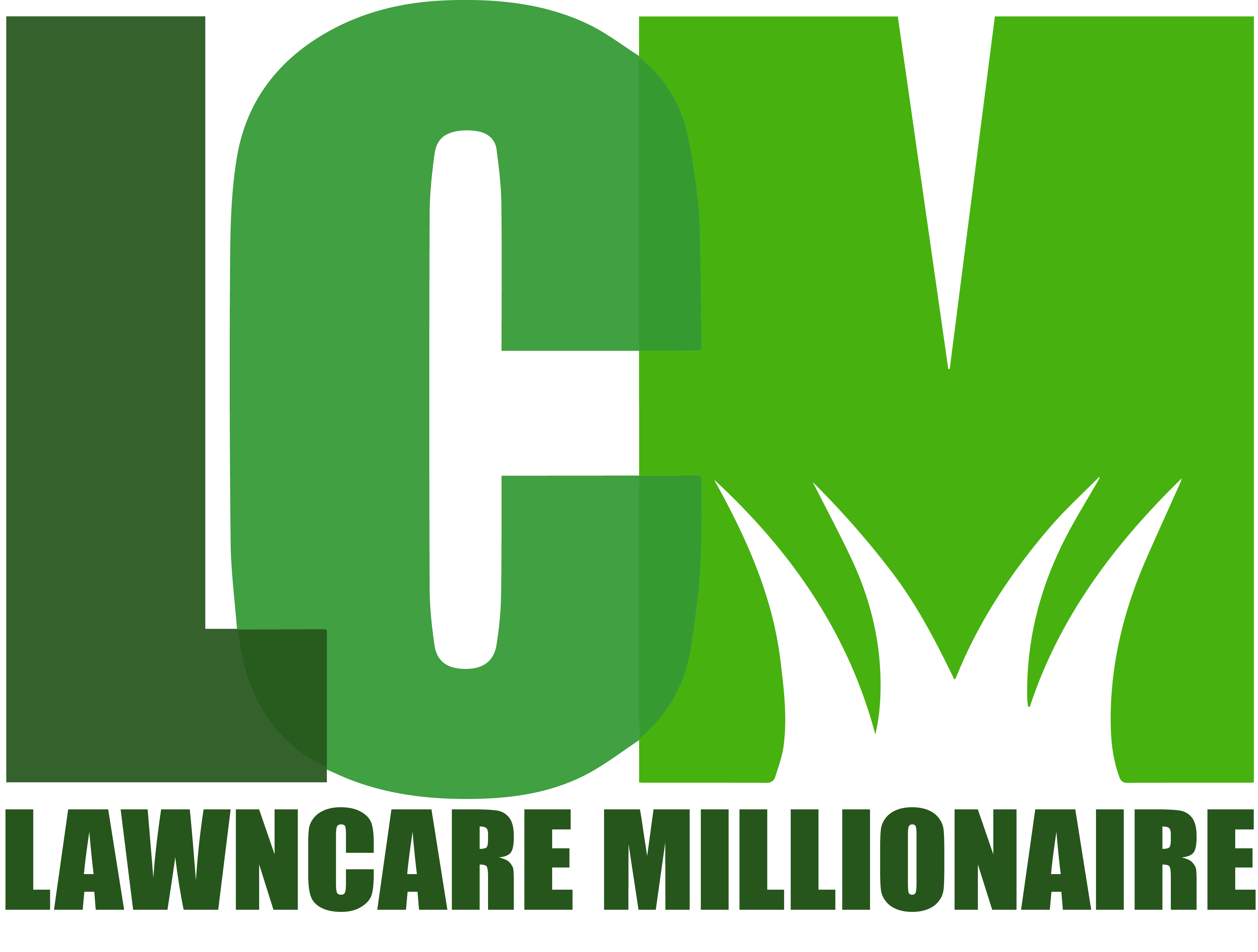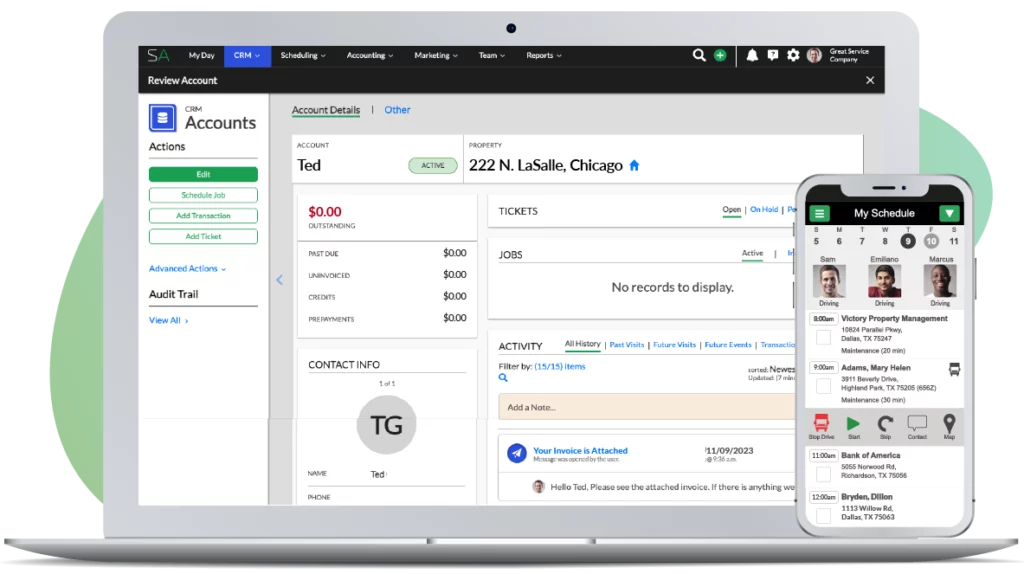Learn how to set lawn care pricing to earn the most profit for your business.
In a prior video, we were talking about how to price. This is part two. Part one sets this video up and I recommend watching it. We’re talking about the subject of how to learn to price your work versus copying the pricing of someone else. Let’s now look at some actual numbers. There’s a couple of things to know as I go through this video.
One, we’re going to talk in terms of per man hour pricing. How much are you making per man hour? When I’m talking in terms of per man hour here, for example, I could tell you that you need to be making forty dollars or more per man hour. When I say forty dollars or more, that includes their salary and their labor burden meaning the taxes you’re paying them. It would include worker’s comp. It would have overhead things in there such as insurance and truck and fuel and administrative costs in the office.
All of that is rolled into this one number that you need to be making per man hour to pay for that employee, all the overhead that goes into selling the work, and having the office administration support that individual. As we’re talking about these per man hour numbers, that’s what all is included within that number.
Let’s talk details here. In this example, I have eleven properties. First, what we did was, we went out and measured all of our client’s properties and figured out for those eleven properties their gross lot. Let’s just use gross lot square footage. We’re using a mowing example so in video number one we were using a mowing example and I’m going to continue to use a mowing example. For these eleven properties, they all fall within the seven thousand to seven thousand nine hundred and ninety square foot gross lot. I know that’s a small property. I’m just trying to keep this example really simple.
Then, what we did was we went out and we tracked time for all of the mowing jobs that we performed. When the truck arrives, we start the clock. When the crew gets back in the truck, we stop the clock. For these eleven properties, here’s how much time we were on the property. We were physically there for twenty minutes, physically at this property for twenty-three, physically at this one for twenty-one. We ran three man crews, so when you take the time we were physically there, multiply that by the number of individuals in the truck, we had total time at the property of sixty minutes. That means three men were there for twenty so, twenty times three is sixty.
Now, what we did because we weren’t sure how to price, we heard one of our competitors say, “Hey I charge thirty dollars per man hour for a property that’s seven thousand to seven thousand nine hundred and ninety-nine square feet.” Now if you watch video number one on pricing, you’ll know why this is such a disastrous thing to do. Don’t copy someone else’s pricing.
Let’s say you did that. You heard that I said thirty dollars is a good price for seven thousand to seven thousand nine hundred and ninety-nine square feet so you went and you charged all of your clients that have that square footage that price. But, now you’ve started tracking your time and you’ve figured out what you’re actually making per man hour.
Now, something else I’ve said is I believe that at a minimum you need to be charging about forty dollars per man hour, minimum. Now look what happens because possibly you copied my pricing. Once you start tracking time on this job, you made thirty a man hour. On this job, you made twenty-six dollars a man hour and let’s look down here, you made thirteen dollars a man hour on this job. It took you one hundred and thirty-two minutes, over two hours to perform this job. You made thirteen a man hour.
You pay your guys fourteen dollars an hour so you’re not even recovering what you paid them per hour. Not to mention the overhead which includes fuel, the truck, the taxes you’re paying them, and the insurance. So, you’re really losing money. You’re basically paying this client to let you mow their lawn. That’s what happened because you may have copied my pricing and because maybe you weren’t ever tracking your time to know how you were doing.
I say “you” in general, not “you” specifically.
All right, so what’s happened now after tracking these eleven jobs, you’re making an average of twenty-four dollars a man hour. That is not a profitable number that you can build a good business on. I’m positive of that. I don’t care what market you’re in. You’ll see some really low numbers in the commercial business but they just have totally different margins. It’s a different business. But, all of what I’m talking about holds up in residential and in commercial. All of my numbers in red here are the result of copying somebody else’s price and you’ve ended up with basically very low profit margins and probably a business that you don’t love.
Now that you’re tracking your time and you’ve measured all of your properties, you can actually figure out what to charge. For example, if I want to make forty dollars per man hour and I know that that property took me sixty minutes, then I can do a little bit of math and you can see my formula is right up here. If you want to copy this stuff and just pause the video, you can reconstruct this spreadsheet. But, you can see that I need to charge this client forty dollars, not thirty dollars if I want to make forty a man hour. On this client, I need to charge them forty-six dollars, not thirty dollars if I want to make forty a man hour.
If I go through here and work on all of my pricing, it will show dramatic results. Here look at this one. I need to charge sixty-six dollars, not thirty dollars for this property to get myself to an average price of forty dollars per man hour. Once you’re aware of pricing and where you stand as a business, you can start to make some decisions on how to set pricing. If this were my business and I was looking at this, here are some things I would do.
First off, I’m not quite sure what this fifty-three is here so I’m going to delete that. Something is not quite right about that number. The calculation must have been wrong. Oh that’s what it was. I know what I did there. That was actually correct. Here’s what this tells me. If I look at my eleven jobs, then I need to be charging on average fifty-three dollars to mow a seven thousand to seven thousand nine hundred and ninety-nine square foot property. That’s what these numbers are telling me.
If I want to make forty dollars per man hour, that needs to be my price. By the way, for me in my market, that’s way high. I would never get that so my numbers are fictitious. I made up these numbers in terms of how long this took. As a result, these numbers are all false. I could never get fifty-three dollars. In fact, thirty dollars in my market is a high-end price. It’s towards the top of the market for just mowing a small lawn like this. Don’t get caught up in these numbers please, but this is what the data is telling me. I need to be charging fifty-three dollars.
Now, here’s what I would first do. I’ve taken a bunch of properties. I’ve figured out how long they take so that I can figure out what the average amount of time it takes me to do a property of this size. That allows me to find my average pricing. Immediately, I would look at some of the anomalies. This one here, this one here, this one here, and the ninety-nine minutes down here. I would look at these and figure out why these properties take so much longer than all the others. Is it us as a company we’re doing something wrong? Is it that there’s something about these properties that isn’t right? Or is it that these properties are in an area, maybe that they have tons of trees on these properties?
Then I could make some decisions. You can look and see that you just aren’t making money on certain types of properties so you decide not to do those any more. If that were the case and you took your worst performers off the table, now look at what it does. It gets your price down to twenty-nine dollars.
Now we’re starting to get into a more realistic price. I’ve just gotten my poor performers off the table. I either fired or I left the market which probably meant firing them, but I made some decisions in my business and now I’ve got more accurate pricing. Maybe it’s a part of town where you just don’t make any money on properties that size so you leave that part of town and you go where there are more properties like this one and this one. These are properties that I can get through a lot faster, maybe I go find a lot more of those types of properties.
Since I got rid of some properties, I’ve got a new price. I’ve figured out that I should be charging about twenty-nine dollars on average for a property between seven thousand and seven thousand nine hundred and ninety-nine square feet. I set that price and now that’s what we start to quote. Then periodically I come back through here, and if you use ServiceAutopilot, this is on the job costing report. Out to the right you can figure this stuff out. We have a training that teaches you how to do this or you can copy all of my formulas and my spreadsheets and you can figure this out for yourself.
As your business evolves and you optimize the business meaning as you raise prices, you become more efficient, you change your setup, and you change different procedures and training within your company, these numbers are going to change from year to year and you can go back and reset pricing. Another option is, if within seven thousand and seven thousand nine hundred and ninety-nine square feet you just find a ton of variance, meaning that at the top end versus the low end of those seven thousand square foot properties there’s three or four dollars in pricing variance, then maybe you break all of this down into ranges.
You look at all of your properties from seven thousand to seven thousand and five hundred square feet. You plot the time. You put in how much you want to make per man hour and notice again in my formula I have forty dollars in there if you want to copy this, it’s forty dollars. You put in how much you want to make and it tells you what you need to be charging and you figure out your pricing based on that.
Everything I just told you, you can do it for yourself very easily and you can do it for every single service you have within your business.
It’s true. It does take work. It’s absolutely true that it would be easier for me to just to tell you how much you should charge, but look at how dangerous that is. I think it’s impossible tell someone how much they can charge, but it’s possible to give hints and say, “I feel you need to be at least forty a man hour or fifty a man hour or sixty-five a man hour depending on what that service is.” For each service, pest control versus lawn care versus mowing, you do need to be achieving a different man hour rate. You have a different cost for the people. You have a different cost for the trucks that they’re running.
You do need to be achieving a different man hour rate depending on the service and in some cases it doesn’t cost you any more to provide one service over the other, but the market will support a higher price. You should be charging a higher price. That’s the way to think about it.
In video number three, we’re going to move on to looking at setting rates.




One Reply to “How To Determine Lawn Care Pricing (Part 2)”
What exaclty is a man hour?